MINI Aceman vs Toyota C-HR – Differences & prices compared
Compare performance, boot space, consumption and price in one view.
Find out now: which car is the better choice for you – MINI Aceman or Toyota C-HR?
The MINI Aceman (SUV) comes with a Electric engine and Automatic transmission. In comparison, the Toyota C-HR (SUV) features a Full Hybrid or Plugin Hybrid engine with Automatic transmission.
When it comes to boot capacity, the MINI Aceman offers 300 L, while the Toyota C-HR provides 447 L – depending on how much space you need. If you’re looking for more power, decide whether the 258 HP of the MINI Aceman or the 223 HP of the Toyota C-HR suits your needs better.
In terms of consumption, the values are 14 kWh per 100 km for the MINI Aceman, and 0.80 L for the Toyota C-HR.
Price-wise, the MINI Aceman starts at 25500 £, while the Toyota C-HR is available from 29100 £. Compare all the details and find out which model fits your lifestyle best!
MINI Aceman
The MINI Aceman offers a fresh take on urban mobility, blending iconic design elements with modern technology. Its compact form is paired with an interior that exudes both comfort and style, making it a popular choice for city drivers. With an emphasis on sustainability, the Aceman features eco-friendly materials and innovative features that enhance the driving experience.
details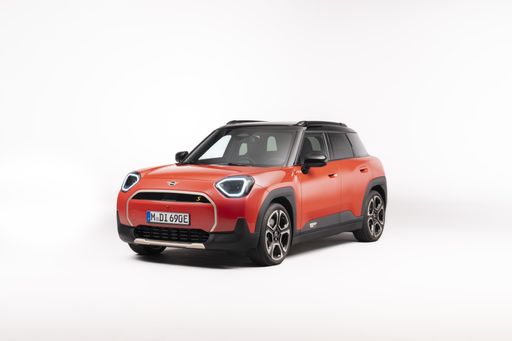 @ press.bmwgroup.com
@ press.bmwgroup.com
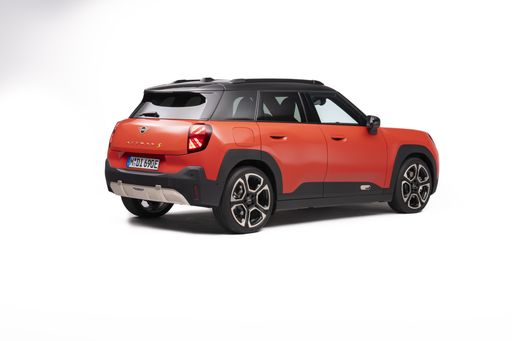 @ press.bmwgroup.com
@ press.bmwgroup.com
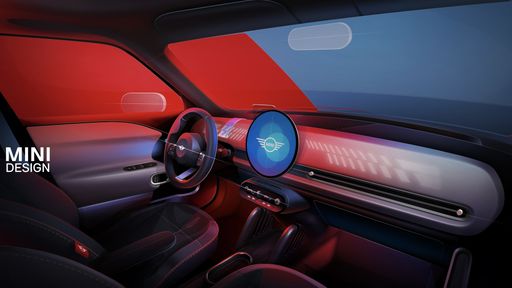 @ press.bmwgroup.com
@ press.bmwgroup.com
Toyota C-HR
The Toyota C-HR stands out with its distinctive and bold design that combines sleek, angular lines with a sporty posture. Its comfortable and stylish interior is equipped with advanced technology features, providing a seamless driving experience. The vehicle offers impressive handling and performance, making it a compelling choice for those who appreciate a blend of practicality and flair on the road.
details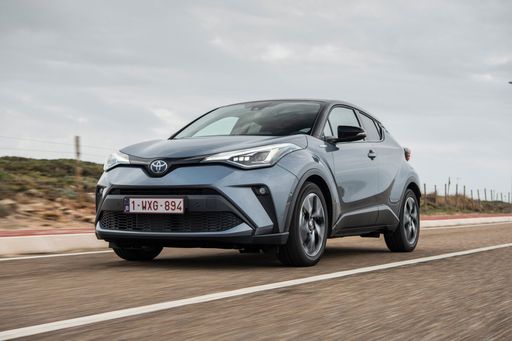 @ Toyota
@ Toyota
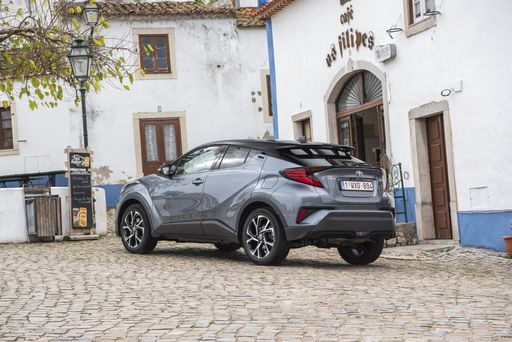 @ Toyota
@ Toyota
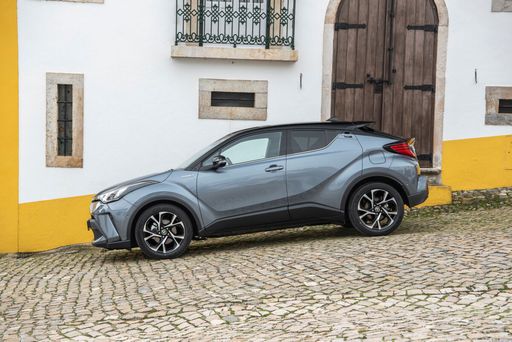 @ Toyota
@ Toyota
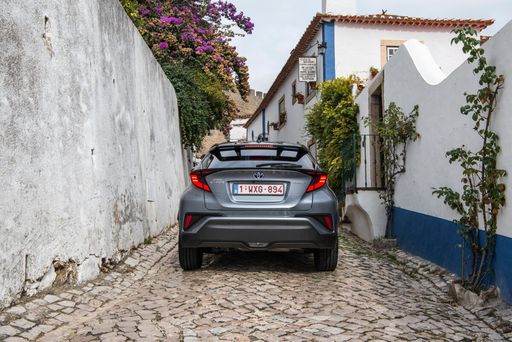 @ Toyota
@ Toyota
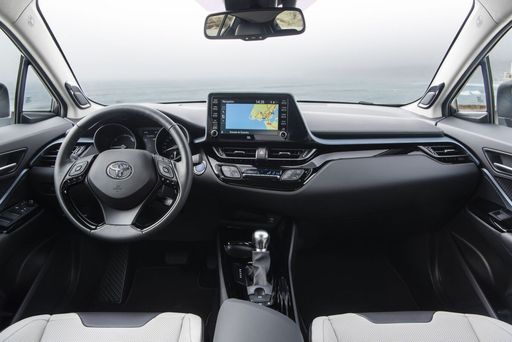 @ Toyota
@ Toyota

|

|
|
|
|
Costs and Consumption |
|
|---|---|
|
Price
25500 - 36200 £
|
Price
29100 - 42800 £
|
|
Consumption L/100km
-
|
Consumption L/100km
0.8 - 5.1 L
|
|
Consumption kWh/100km
14 - 16 kWh
|
Consumption kWh/100km
-
|
|
Electric Range
303 - 405 km
|
Electric Range
68 km
|
|
Battery Capacity
38.5 - 49.2 kWh
|
Battery Capacity
-
|
|
co2
0 g/km
|
co2
17 - 115 g/km
|
|
Fuel tank capacity
-
|
Fuel tank capacity
43 L
|
Dimensions and Body |
|
|---|---|
|
Body Type
SUV
|
Body Type
SUV
|
|
Seats
5
|
Seats
5
|
|
Doors
5
|
Doors
5
|
|
Curb weight
1720 - 1825 kg
|
Curb weight
1505 - 1755 kg
|
|
Trunk capacity
300 L
|
Trunk capacity
350 - 447 L
|
|
Length
4079 mm
|
Length
4362 mm
|
|
Width
1754 mm
|
Width
1832 mm
|
|
Height
1514 mm
|
Height
1558 - 1564 mm
|
|
Payload
450 - 530 kg
|
Payload
375 - 425 kg
|
Engine and Performance |
|
|---|---|
|
Engine Type
Electric
|
Engine Type
Full Hybrid, Plugin Hybrid
|
|
Transmission
Automatic
|
Transmission
Automatic
|
|
Transmission Detail
Reduction Gearbox
|
Transmission Detail
CVT
|
|
Drive Type
Front-Wheel Drive
|
Drive Type
Front-Wheel Drive, All-Wheel Drive
|
|
Power HP
184 - 258 HP
|
Power HP
140 - 223 HP
|
|
Acceleration 0-100km/h
6.4 - 7.9 s
|
Acceleration 0-100km/h
7.4 - 9.9 s
|
|
Max Speed
160 - 200 km/h
|
Max Speed
175 - 180 km/h
|
|
Torque
290 - 350 Nm
|
Torque
-
|
|
Number of Cylinders
-
|
Number of Cylinders
4
|
|
Power kW
135 - 190 kW
|
Power kW
103 - 164 kW
|
|
Engine capacity
-
|
Engine capacity
1798 - 1987 cm3
|
General |
|
|---|---|
|
Model Year
2024 - 2025
|
Model Year
2024 - 2025
|
|
CO2 Efficiency Class
A
|
CO2 Efficiency Class
C, B
|
|
Brand
MINI
|
Brand
Toyota
|
MINI Aceman
The MINI Aceman: A New Era of Innovation
The arrival of the MINI Aceman marks a pivotal moment in the evolution of MINI’s automotive design and sustainability commitment. This fully electric SUV is a testament to cutting-edge engineering and forward-thinking design, setting a new benchmark in its class.
Technical Prowess Under the Bonnet
At the heart of the MINI Aceman lies a powerful choice of electric motors. With options offering between 184 and 218 PS, drivers can expect responsive and dynamic performance courtesy of the efficient front-wheel drive setup. The unique selling point is its ability to deliver substantial boost with instant torque ranging from 290 to 330 Nm. Such power ensures that the Aceman can accelerate from 0-100 km/h in as little as 7.1 seconds, while maintaining a sustainable driving efficiency.
Range and Efficiency
The MINI Aceman's battery capacity ranges from 38.5 to 49.2 kWh, providing an impressive electric range of up to 405 km. This efficient design is encapsulated in its consumption, between 14 and 14.1 kWh/100km, allowing drivers to cover distances with minimal environmental impact. It is a model of sustainability with a CO2 efficiency class of A, emitting zero grams of CO2 per kilometer.
Design and Innovation
Continuing MINI's tradition of expressive design, the Aceman features a bold new look whilst retaining iconic MINI stylings. The vehicle measures 4079 mm in length, 1754 mm in width, and 1514 mm in height, offering a compact and urban-friendly posture. Practicality has not been compromised, offering a boot space of 300 liters and a versatile five-seat configuration. This makes the Aceman a practical choice for city and long-distance adventures alike.
Comfort and Technology
The interior of MINI Aceman is packed with technological innovations and high-quality materials, spanning several trim levels including Essential Trim, Classic Trim, Favoured Trim, and the sporty JCW Trim. These trims allow for customization to match individual preferences and lifestyles. The driver-centric cockpit is designed for intuitive interaction, with features that seamlessly integrate with the digital aspirations of modern drivers.
Price and Positioning
Starting at €34,900 and reaching up to €47,860, the MINI Aceman represents an attractive proposition in the burgeoning electric SUV market. It competes by offering a full spectrum of luxury, performance, and efficiency, exceeding expectations of what an electric SUV can achieve.
Conclusion
The MINI Aceman is not just an electric vehicle; it's a statement of modern engineering and design excellence. For those ready to embrace the future of driving without sacrificing the thrill and quality of the journey, the MINI Aceman stands out as a top contender.
Toyota C-HR
Revolutionising the Crossover Segment: The Toyota C-HR
The Toyota C-HR has firmly established itself as a standout contender in the compact crossover segment. Known for its distinct design and hybrid capabilities, the C-HR continues to prioritise innovation and efficiency. In this article, we delve into the technical details that make the 2024 iteration a compelling choice for discerning buyers.
Distinctive Design and Aerodynamics
The Toyota C-HR boasts a striking design that combines angular lines with modern aesthetics. This isn't merely for show; the design enhances aerodynamics, improving fuel efficiency and handling. With dimensions of 4362mm in length and a sophisticated structure, the C-HR strikes a balance between urban agility and on-road stability.
Impressive Hybrid Powertrains
The C-HR lineup offers innovative hybrid and plug-in hybrid drivetrain options. The full hybrid system is tailored for those who seek both economic and environmental benefits. It combines a petrol engine with an electric motor to deliver power outputs ranging from 140 to 223 PS, achieving remarkable fuel consumption rates from 0.8 to 5.1 L/100km. The 2.0 Plug-In Hybrid variant impresses with an electric range of 67 km, ideal for urban commuters.
Unmatched Efficiency and Performance
Acceleration figures for the C-HR range from 7.4 to 9.9 seconds to reach 0-100 km/h, ensuring a responsive driving experience. Maximum speeds between 175 and 180 km/h cater to those who appreciate a bit of zest on the open road. Coupled with CVT automatic transmission and both front-wheel and all-wheel-drive configurations, the C-HR adapts to various driving conditions with ease.
Advanced Technology and Features
Inside, the C-HR is equipped with the latest technology aimed at providing connectivity and comfort. The model hosts an array of features across its diverse trim levels, including Business Edition, Lounge, and the sporty GR SPORT. Each variant is designed to meet the demands of different lifestyles, ensuring there's a C-HR model to suit every taste.
Sustainability and Cost Efficiency
With CO2 emissions ranging from 19 to 115 g/km, the C-HR stands as a testament to Toyota's commitment to sustainability. Financially savvy consumers will also appreciate the running cost, with monthly expenses from €959 to €1204, and a cost per km as low as 38.4 cents. Such efficiency makes the vehicle an attractive option for eco-minded buyers.
Conclusion: A Forward-Thinking Choice
The 2024 Toyota C-HR embodies Toyota's forward-thinking approach to automotive innovation, blending eco-friendly hybrid technologies with stylish design and practicality. It offers a glimpse into the future of driving, where efficiency meets elegance. Whether you're a city dweller or an adventure seeker, the C-HR promises a driving experience that is both enjoyable and environmentally conscious.
What drive types are available for the MINI Aceman?
The MINI Aceman is available as Front-Wheel Drive.
The prices and data displayed are estimates based on German list prices and may vary by country. This information is not legally binding.
